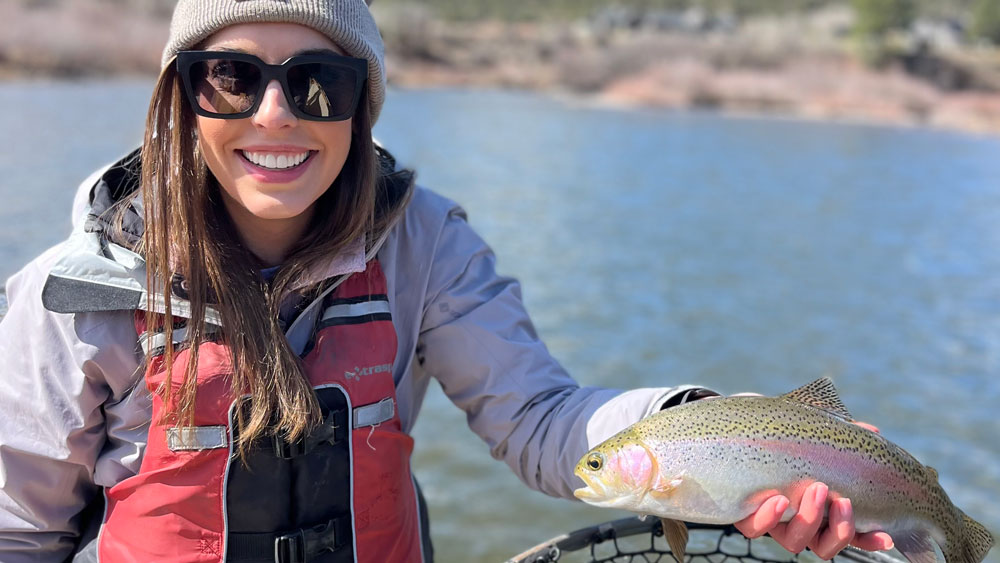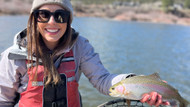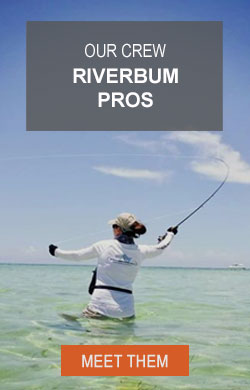Parachute Adams: The Timeless Fly That Still Outfishes the Rest

At RiverBum, we believe every angler should have a few cornerstone flies in their box—patterns that are reliable, versatile, and proven through decades of use. Near the very top of that list is the Parachute Adams, a dry fly pattern so effective it’s often the first fly we tie on when we're facing unfamiliar water or unpredictable hatches. With its rich history, unmatched versatility, and subtle adaptability through different color variations, the Parachute Adams remains one of the best fly patterns in the world of fly fishing.
The Origin of a Classic
To understand why the Parachute Adams continues to fool fish over a century after its inception, it’s helpful to start with its roots.
The original Adams fly was created in 1922 by Leonard Halladay, a Michigan fly tyer and fishing guide. It was developed for his friend Charles Adams, a lawyer and avid angler who was looking for a dry fly that could mimic the mayflies commonly seen on Michigan rivers. The fly's popularity quickly spread across the Midwest and eventually the entire United States. While the original Adams had upright hackle wings and a traditional dry fly hackle, the Parachute version—popularized in the mid-20th century—offered some key upgrades.
The Parachute Adams, with its white post and horizontal hackle wrapped around the base of that post, not only improved the fly’s visibility for anglers but also helped it sit lower in the water—more like a real mayfly. The result? A near-perfect mayfly imitation that’s easy to see, natural in presentation, and irresistible to trout.
What It Imitates
So, what does the Parachute Adams actually imitate?
The brilliance of this fly lies in its suggestive profile rather than exact imitation. Its neutral gray body, grizzly hackle, and parachute-style design don’t exactly match any one species—but they resemble many. That makes the Parachute Adams a fantastic general mayfly imitation, especially when trout are feeding selectively but there’s no obvious hatch.
Some of the primary insects the Parachute Adams mimics include:
- Blue-Winged Olives (BWOs)
- Pale Morning Duns (PMDs)
- Callibaetis -(especially in stillwaters)
- Gray Drakes
- Mahogany Duns
The low-riding silhouette of the parachute hackle closely mirrors the delicate way these mayflies sit on the surface, legs spread out, wings upright. Trout notice that—and respond accordingly.
The Power of Color Variation
One of the reasons we love the Parachute Adams at RiverBum is that it adapts beautifully. By varying the body color slightly, anglers can fine-tune their presentation to match specific hatches more closely. Here are a few common variations and what they imitate:
-
Classic Gray Body (Original Parachute Adams)
- Imitates: BWOs, PMDs, and general duns
- Best Use: Cloudy days, late spring through fall
- Why It Works: The gray body offers a perfect middle ground—it looks like everything and nothing at the same time. It works when fish aren’t locked in on a single species or during mixed hatches.
-
Olive Body Parachute Adams
- Imitates: Blue-Winged Olives
- Best Use: Early spring or late fall when BWOs hatch in cooler weather
- Why It Works: BWOs are a staple hatch across North America. Trout often key in on their olive bodies and dark wings, making the olive-bodied Adams a high-confidence choice.
-
Tan or Light Yellow Body Parachute Adams
- Imitates: Pale Morning Duns, Light Cahills
- Best Use: Summer mornings, clear water conditions
- Why It Works: These lighter-bodied mayflies hatch in warmer months, and trout expect them to look pale and delicate. Tan or yellow-bodied variations match these insects beautifully.
-
Rusty or Mahogany Body Parachute Adams
- Imitates: Mahogany Duns, fall hatches
- Best Use: September through November on freestone streams
- Why It Works: The rusty brown coloration is perfect for imitating the darker-bodied mayflies that appear later in the season, especially in tannin-stained water.
-
Purple Parachute Adams
- Imitates: Attractors, or during mixed mayfly hatches
- Best Use: High-contrast situations, late summer, or technical waters
- Why It Works: While purple may not mimic a specific insect, trout often respond to the contrast. Some anglers swear by this color when traditional hues aren’t producing.
How to Fish It
The Parachute Adams is best fished dead-drift, allowing the current to carry it naturally downstream without drag. We recommend using a 9' tapered leader with 5X or 6X tippet, especially in clear water or when trout are picky.
On rivers, try casting upstream to rising trout or prospecting in likely holding lies—riffles, seams, and undercut banks. On lakes and stillwaters, use long casts and a subtle twitch every now and then to simulate an emerger struggling to take flight.
And remember, even when no hatch is visible, tying on a Parachute Adams can often prompt those mysterious surface takes that make dry fly fishing so magical.
Why We Keep Coming Back to It
At RiverBum, we’re constantly testing flies in diverse conditions—from Western tailwaters to Appalachian freestones, high-mountain lakes to lowland spring creeks. Time and again, the Parachute Adams earns its place as a first-choice fly.
Its longevity in the fly fishing world isn’t just about nostalgia. It’s about results. Whether you’re a seasoned angler with decades on the water or just getting into the sport, the Parachute Adams is a confidence fly—one that delivers under pressure, across seasons, and in waters around the world.
Stock Up on the Right Sizes and Colors
We stock the Parachute Adams in a wide range of sizes (typically #12 through #20) and several effective color variations. Our flies are hand-tied with premium materials, tested on real waters, and made to hold up through fish after fish.
Visit RiverBum.com to browse our collection and make sure your fly box is stocked with one of the greatest dry flies ever created.
Because when the hatch is uncertain, the trout are picky, or the water is new, you can always trust a Parachute Adams.







